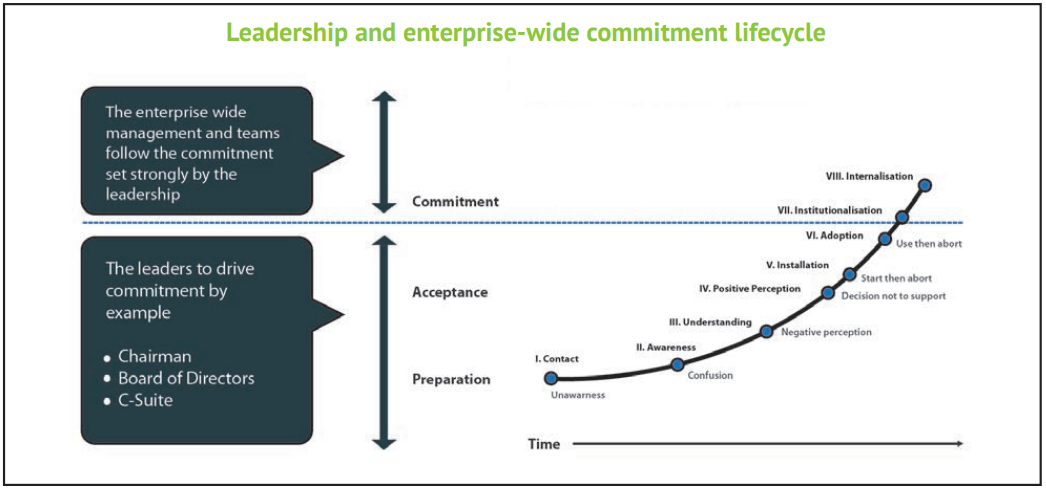Board portals to the fourth industrial revolution
Business interruption in a digitally connected world is arriving at the doorstep of every company. It is a matter of time and can even be months or days away.
For example, Kodak in 1998 had 170,000 employees and sold 85 per cent of all photo paper worldwide. A mere three years later, digital photography took over. Paper film became obsolete; Kodak went bankrupt. It is just but one – though infamous – example of how traditional industries are set for drastic transformation, with technology and digitalisation leading the curve.
Welcome to the Fourth Industrial Revolution, an exponential age where speed is a virtue and where whether you are ready or not, the digital and connected world is arriving at your door.
When it does, will each of us and our companies be there to welcome it with open arms? Or shut the door in its face?
Software, the new heartware of businesses
Traditional industries can expect software to be “disrupting” them in the next five to 10 years.
Already, we are seeing how Uber, a software company, has become the largest taxi company in the world. The same goes for Airbnb (the largest hotel company that do not own any properties) and Alibaba (the largest superstore with no inventory). If the automobile industry does not buck up, it needs to be prepared for the likes of Tesla, which expects to make widely available self-driven cars by 2018. By 2030, computers will become more intelligent than humans.
Put simply, traditional businesses need to adapt or risk fading into oblivion.
“The Fourth Industrial Revolution: what it means, how to respond” was the central theme of
the 2016 World Economic Forum (WEF) in Davos, Switzerland. Klaus Schwab, WEF founder and
executive chairman described it as “one (that) is evolving at an exponential rather than linear
pace; that builds on the digital revolution and combines multiple technologies that are leading
to unprecedented paradigm shifts in the economy, business, society, and individually; and that
involves the transformation of entire systems, across (and within) countries, companies, industries
and society as a whole.”
A revolution like no other
In this revolution, speed becomes critically important. Digital technology being a key enabler of speed becomes a cornerstone of successful businesses.
As the leaders of a traditional business, taking steps to embrace digital technologies early becomes critical. Innovation and change speedily therefore becomes mandatory to survival. The digital transformation is required across the business and not only for external client interactions.
An IDG research report, Digital Transformation: Crossing The Chasm From IT To The Business, revealed that out of the top five extreme challenges for business transformation, the “changing culture and mindset” leads the list in the number one slot. It is further stated that out of the top five steps for a successful transformation, the number one slot in the list is again “change that sweeping is all but impossible without active, wholehearted support from CEOs and their top lieutenants.”
A key challenge involving leadership of a business is getting them to be fully vested in technology and innovation in driving organisational change.
While the chairman and board of directors have an amplified, powerful say in how the company is run, often there are very few touch points between them and the business. In most cases, their only frequent interaction with the rest of the company might come through board meetings with outdated traditional approaches such as delivery of paper-based documents, delivery of confidential content via unsecure mediums such as email. All of which are unsuited and are not compliant with the level of critical confidentiality levels needed to be maintained with board papers and correspondence.
A revolution like no other
In short, the leadership has the ultimate responsibility to ensure purpose and alignment of the total organisation is met, and the chairman, CEO, CFO play a far more critical role. They should be the “great digital leadership”. However, they need to first understand and experience digital technology and business transformation, go beyond the theoretical and ideas and truly grasp what digitalisation is, endorse and encourage it, then provide the leadership required for the technology to effect positively across the enterprise and be truly transformative.
As illustrated in the diagram, “Leadership and enterprise-wide commitment lifecycle”, the leadership is able to work through steps I to IV with hands on experience using board portals and digital automation at a rapid pace of within two to three months. This leaves steps VII to VIII to be driven from the top with the leadership’s participation on digitalisation of their work activities and also setting an example to the total enterprise.

While businesses have been championing the use of digital technology to radically improve their performance, it is leadership, not technology that ultimately drives change.
With digital technologies such as secure and high-quality iPad enabled board and executive committee meeting automation solutions, top management gains the opportunity to experience digital technology in business. A board and executive committee meeting automation solution is a collaborative software that allows boards of directors to securely access board documents and collaborate with other members digitally.
The popular use of board portals has led to heightened awareness of the efficiency and importance of use of digital technology along with the security aspects, reliability, usability which are key issues that concern digital transformation in an organisation amongst the leadership members. This leads to breaking myths and barriers related to technology adoption which is a key challenge in adopting innovative and new technologies in business.
Studies have shown in organisations where the board and C-suite level use board portals, there is a 70 per cent likelihood that they will understand the need for greater security for mobile applications.
After all, a company with leadership that is aware of digital experientially has a significantly higher chance of embracing digital transformation across the total company
SID Directors Conference Book 2016 – Singapore Institute of Directors: https://www.sid.org.sg/images/PDFS/conference/SID_2016_CONFERENCEBOOK.pdf


